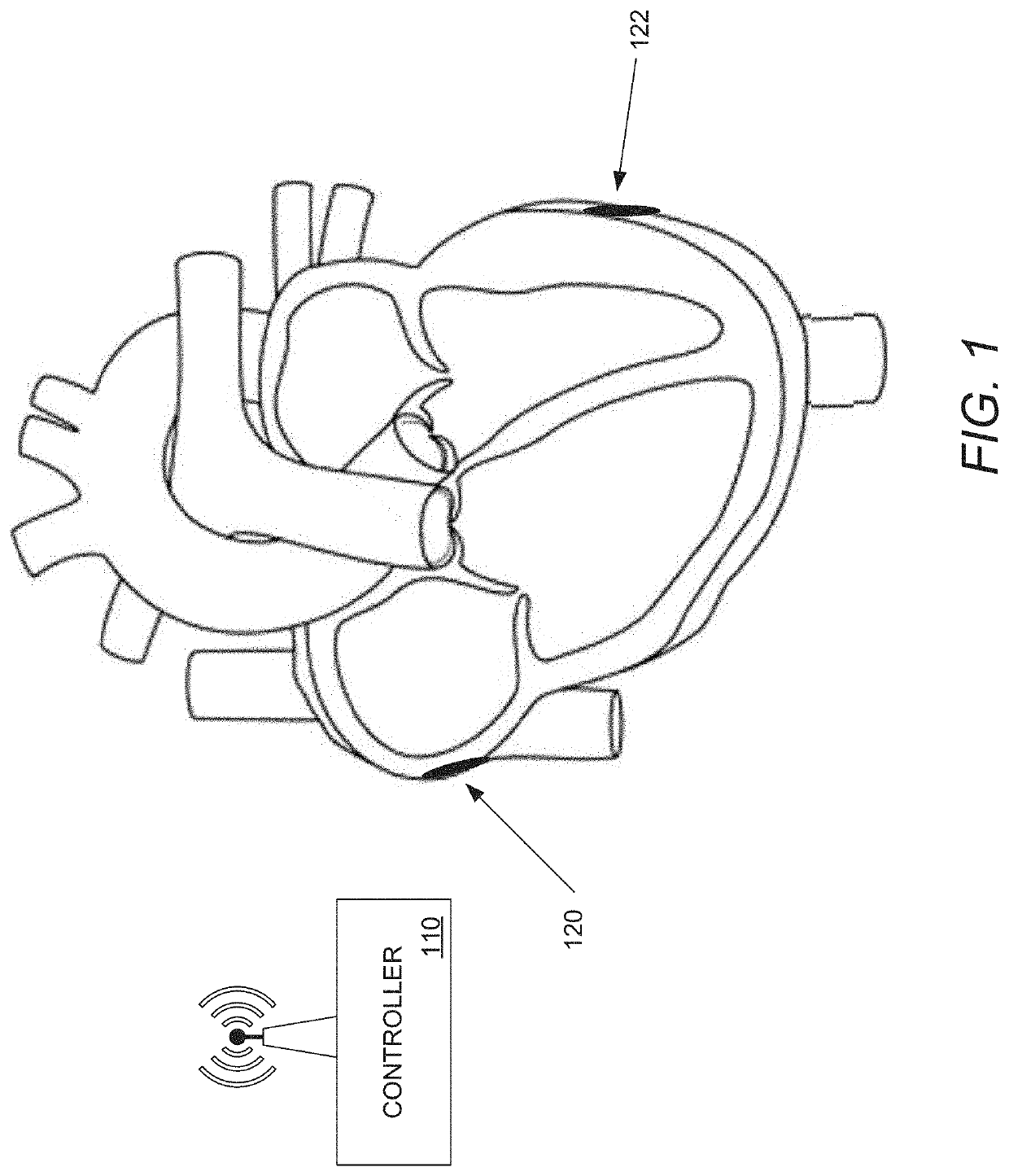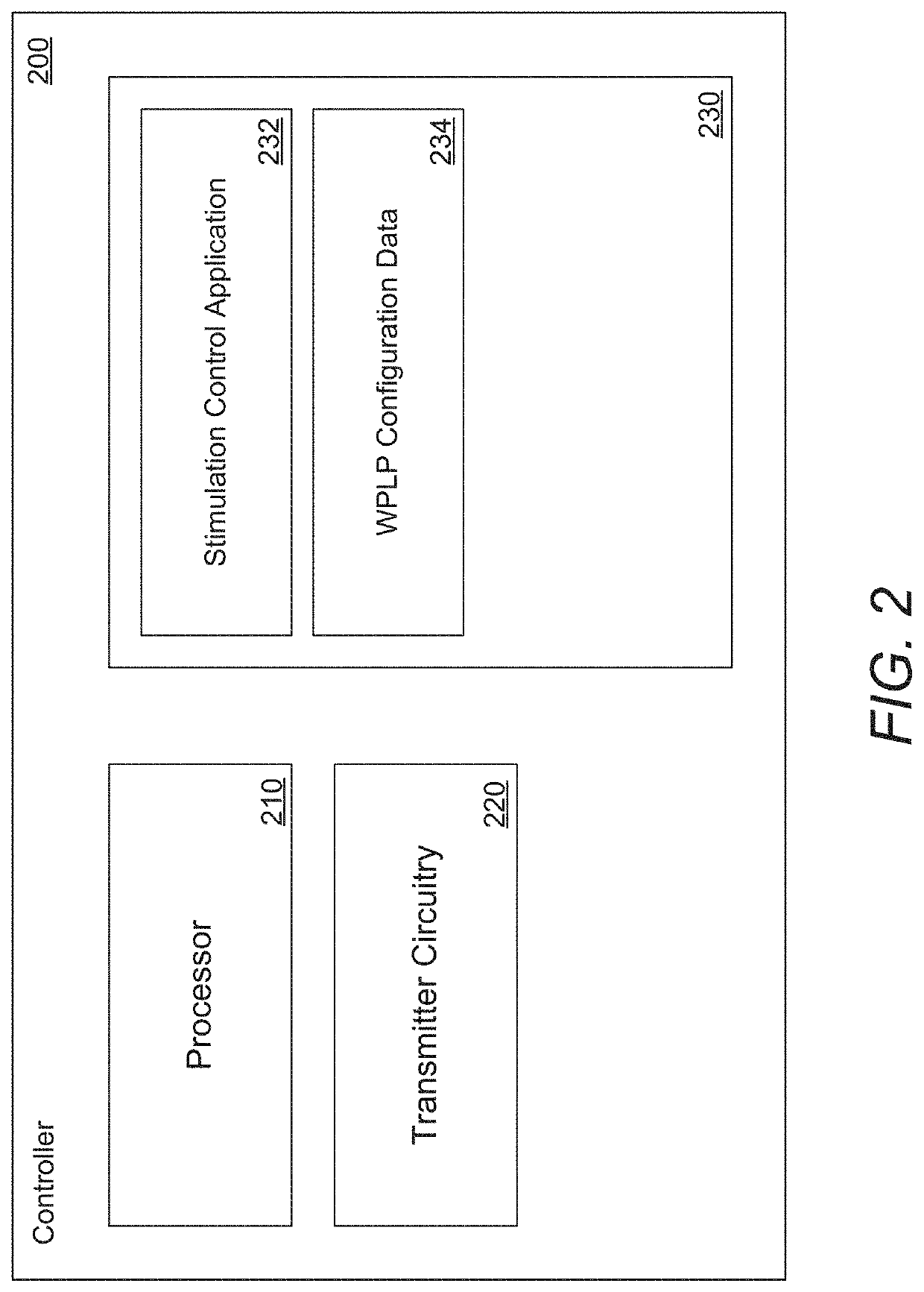Systems and Methods for Controlling Wirelessly Powered Leadless Pacemakers
a technology of leadless pacemakers and wireless power, applied in the field of wireless powering leadless pacemakers, can solve problems such as health risks of irregular heartbeats
- Summary
- Abstract
- Description
- Claims
- Application Information
AI Technical Summary
Benefits of technology
Problems solved by technology
Method used
Image
Examples
Embodiment Construction
[0046]Turning now to the drawings, systems and methods for heart pacing using wirelessly powered, leadless pacemakers are illustrated. Pacemakers are a critical part of many treatment regimens for those living with heart conditions. Traditional pacemakers consist of three main components: a pulse generator, one or more leads that carry the electric pulses to the heart, and an electrode at the end of each lead to deliver the stimulation. Recently, leadless pacemakers have been developed which combine a self-contained generator and electrode system which removes the need for a separate pulse generator. However, in contrast to a traditional pacemaker which uses a central pulse generator for all electrodes, systems with multiple leadless pacemakers are difficult to synchronize.
[0047]Further, it is relatively easy to replace the battery for (or entirely replace) pulse generators of traditional pacemakers which are not implanted directly into the heart, and are therefore easier to access....
PUM
 Login to View More
Login to View More Abstract
Description
Claims
Application Information
 Login to View More
Login to View More - R&D
- Intellectual Property
- Life Sciences
- Materials
- Tech Scout
- Unparalleled Data Quality
- Higher Quality Content
- 60% Fewer Hallucinations
Browse by: Latest US Patents, China's latest patents, Technical Efficacy Thesaurus, Application Domain, Technology Topic, Popular Technical Reports.
© 2025 PatSnap. All rights reserved.Legal|Privacy policy|Modern Slavery Act Transparency Statement|Sitemap|About US| Contact US: help@patsnap.com



